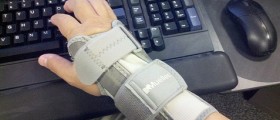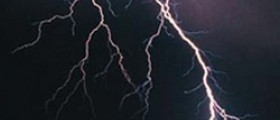Tardive dystonia is a disorder that affects the movement through involuntary muscle contractions and spasms. It is characterized by irregular, often uncomfortable movements and postures. The symptoms and their severity depend on the extent in which this disorder affects a person.
Symptoms of tardive dystonia
Tardive dystonia usually affects the muscles of the face, but it can also be generalized and involve other or all parts of the body as well. The symptoms are categorized according to the body part they involve.
Spasmodic torticollis involves the muscles of the neck. The muscles contract in a way that makes the head droop down on the chest, causing significant discomfort and pain. This is the most painful symptom of tardive dystonia.
Blepharospasm involves the muscles that control the eyelids and the symptoms are exhibited as unusual or prolonged blinking.
Diurnal bruxism is similar to bruxism that affects a person at night, only it occurs during the day. It means that a person is involuntarily clenching or grinding the teeth. It can lead to pain and serious tooth damage.
Dysphonia affects the muscles that control speaking and breathing. A person with this symptom will talk in a raspy voice that sounds like choking.
Ballismus involves arms and legs, causing them to abruptly jut out from the body, as in kicking or hitting something. Persons with this symptom are often perceived as aggressive, which, of course, is not true.
Diagnosis and treatment
Tardive dystonia may be difficult to diagnose because there is no particular test for it. Doctors need to carefully monitor the patient and take note about the type of involuntary muscle contractions, intervals in which they occur and whether they are becoming worse or better. Patients are also asked to keep track of their symptoms, especially the location, body parts involved and the intensity.
It is also necessary to exclude tardive tourettism, a variety of tardive dystonia, and other disorders that may resemble it.
Unfortunately, there is no cure for tardive dyskinesia as of yet. There are, however, methods that can make the disorder more manageable. Medications that are usually given to tardive dyskinesia patients include muscle relaxants, anticholinergics and Parkinsonian drugs. In extreme cases, surgery for denervation of certain muscles can be done, but this procedure is irreversible and the destroyed nerves cannot be activated again.
Deep brain stimulation is a more recent option, considered for severe cases of generalized dystonia. This procedure, however, has several significant side effects.








-When-You-Have-Parkinson's-Disease_f_280x120.jpg)
_f_280x120.jpg)







Your thoughts on this
Loading...